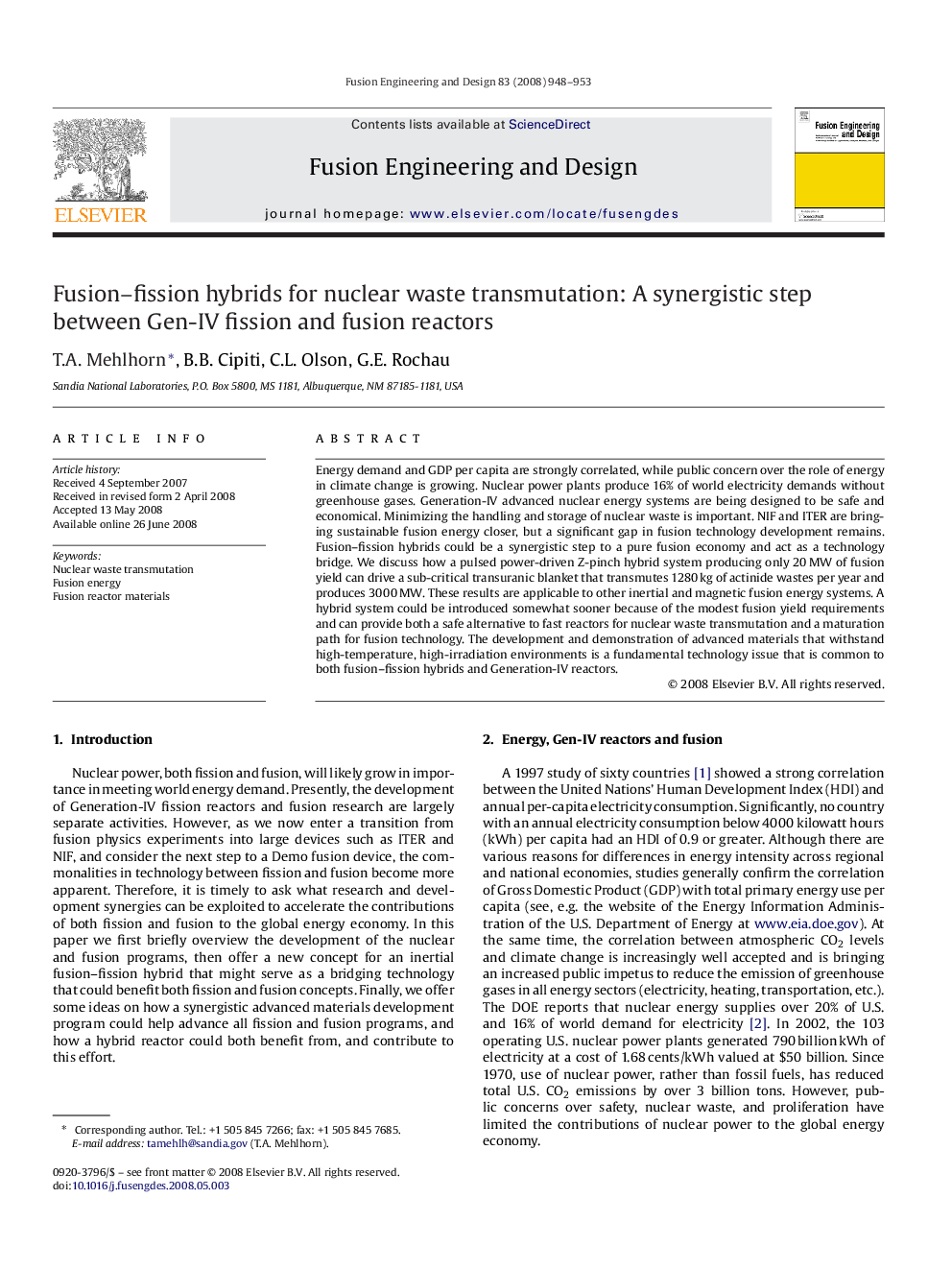| Article ID | Journal | Published Year | Pages | File Type |
|---|---|---|---|---|
| 273018 | Fusion Engineering and Design | 2008 | 6 Pages |
Energy demand and GDP per capita are strongly correlated, while public concern over the role of energy in climate change is growing. Nuclear power plants produce 16% of world electricity demands without greenhouse gases. Generation-IV advanced nuclear energy systems are being designed to be safe and economical. Minimizing the handling and storage of nuclear waste is important. NIF and ITER are bringing sustainable fusion energy closer, but a significant gap in fusion technology development remains. Fusion–fission hybrids could be a synergistic step to a pure fusion economy and act as a technology bridge. We discuss how a pulsed power-driven Z-pinch hybrid system producing only 20 MW of fusion yield can drive a sub-critical transuranic blanket that transmutes 1280 kg of actinide wastes per year and produces 3000 MW. These results are applicable to other inertial and magnetic fusion energy systems. A hybrid system could be introduced somewhat sooner because of the modest fusion yield requirements and can provide both a safe alternative to fast reactors for nuclear waste transmutation and a maturation path for fusion technology. The development and demonstration of advanced materials that withstand high-temperature, high-irradiation environments is a fundamental technology issue that is common to both fusion–fission hybrids and Generation-IV reactors.
